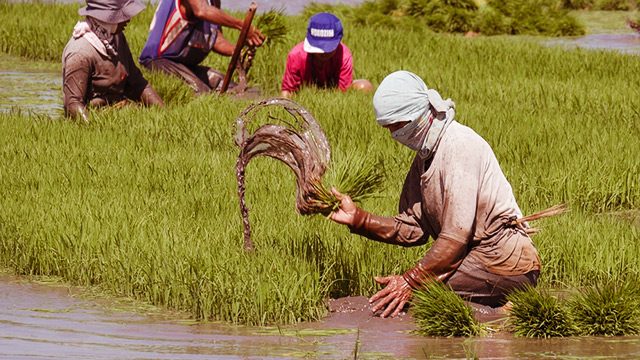SUMMARY
This is AI generated summarization, which may have errors. For context, always refer to the full article.

DAVAO CITY, Philippines – The Mindanao Development Authority (MinDA) said it is talking to farmers in the region to adopt the ratooning method in rice farming in a bid to boost production amid fears of short term supply shortage due to coronavirus.
The country’s rice supply was threatened by Vietnam’s decision to reduce its rice exports amid uncertainties brought about by the coronavirus pandemic. The neighboring country on the other side of West Philippine Sea (South China Sea) is one of the countrys’ main sources of imported rice, second only to Thailand.
MinDA Secretary Emmanuel Piñol said he tapped his home province North Cotabato for the government program “Quick Turn-Around” plan for rice production.
“The Quick Turn-Around Plan aims to produce additional rice before the onset of the lean months, which starts July and stretches up to October, to avert a feared shortfall in rice supply in Mindanao,” Piñol said.
The plan involved ratooning in rice fields that are freshly harvested using high-yielding hybrid or inbred rice seeds, particularly the variety TH 82, which could be sown in dry field without the need for irrigation water.
Ratooning is as old as rice farming in the Philippines. It is the second growth of rice, which allows the farmer to have a second harvest in a little over two months, cutting production period significantly.
The downside is farmers will have a third of their usual harvest using the normal planting process.
“The upside is that there is a Quick Turn-Around because there is no need for the farmer to till and prepare the field and sow seeds or plant again,” said Piñol.
Piñol said they will talk to more farmers in other provinces to adopt the ratooning method in coordination with the local government units (LGU), the Department of Agriculture (DA) and the National Irrigation Administration (NIA).
“The program will be replicated in other rice-producing provinces of Mindanao, targeting an area of 100,000 hectares for the Ratooning Program and 200,000 hectares for the irrigated and upland areas,” he said.
Piñol said the hybrid seeds MinDA has been offering can yield between 8 to 10 metric tons of harvest.
Piñol said he sents letters to DA Secretary William Dar and NIA chairman Secretary Karlo Alexis Nograles to ask for support.
He wants DA to facilitate early release of the Inbred Rice Seeds under the RCEP and additional financial support for the LGUs participating in the program like Hybrid
Piñol said NIA’s role is also important because it decides when to release water for irrigation.
Piñol also said MinDA will continue to push for the Self-Sustaining Food Supply Strategy (SSFSS).
“As the name suggests, SSFSS will rally local government units and communities in Mindanao to produce their own food or partner with adjacent political units for a symbiotic sustainable food supply scheme,” he said.
Rice is a staple in the Philippines. The rice-producing country was also the world’s top rice exporter in 2019. – Rappler.com
Add a comment
How does this make you feel?





There are no comments yet. Add your comment to start the conversation.